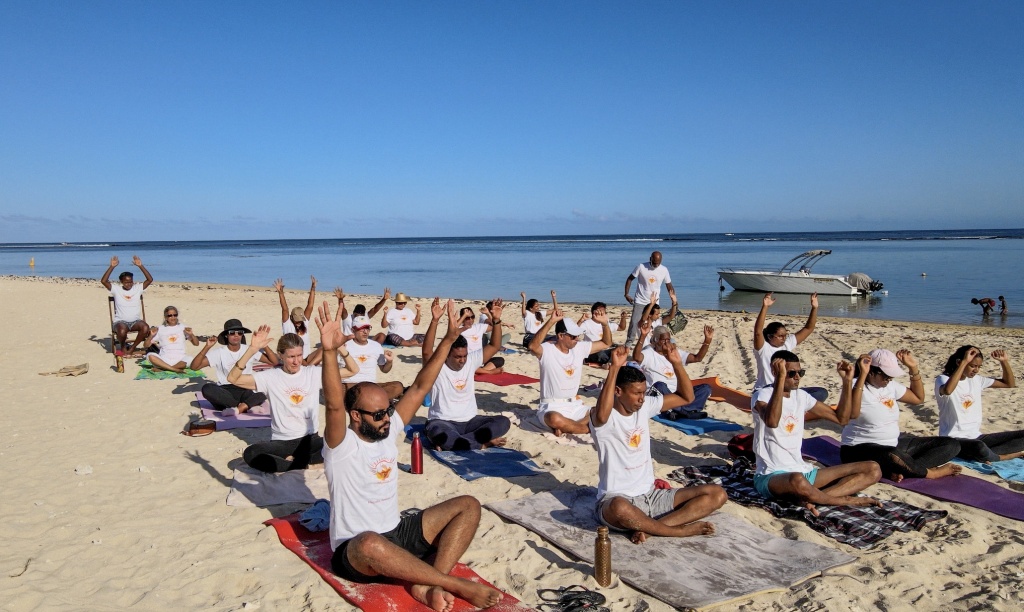
7 science-backed deep breathing exercises to reduce stress and anxiety
- By Dr Ishan Shivanand, Founder of Yoga of Immortals
Stress and anxiety have become common in everyday life.
To address them, one can adopt yoga-based interventions to calm the mind and enter a state of true relaxation for holistic wellbeing. Deep breathing exercises, also known as “pran” and “sukshma” kriyas, have been known for their efficacy as lifestyle pratices for improved quality of life reduced stress and anxiety.
The kriyas have ancient relevance that are based on the regarded Indian Knowledge Systems. Short sessions, lasting anywhere between five to 20 minutes, can be easily integrated as part of daily routine for total wellbeing. These simple exercises are recommended for everybody and all age groups. They are good for those who are healthy, as well as those who have preexisting health issues.
Some of the powerful deep breathing exercises have been broadly discussed below. Each type serves a purpose.
- Nadi shodhana pranayam (alternate nostril breathing)
"Nadi" means energy channel, and "shodhana" means purification or cleansing in Sanskrit. Put together, it translates to channel purification or nerve cleansing. “Nadi shodhana pranayama” balances the flow of energy channels in the body. Alternating the breath between the left and right nostrils and using specific hand gestures to regulate airflow, this exercise promotes harmony and balance. It helps calm the mind, reduce stress, and improve respiratory function.
- Bhastrika pranayam (bellows breath)
“Bhastrika Pranayam” is a dynamic breathing technique that involves rapid and forceful inhalations and exhalations. The word "bhastrika" translates to "bellows" in Sanskrit. In this exercise, the breath is mimicked to resemble the pumping action of a bellow. “Bhastrika pranayama” increases vitality, improves lung capacity, and clears nasal passages. Moreover, it boosts digestion, relieves congestion, and reduces mental fatigue.
- Kapalbhati (skull-shining breath)
In Sanskrit, “kapal” means skull and “bhati” means shining or illuminating. It is a frontal brain cleansing technique of forceful exhalation and passive inhalation. This exercise involves rapid and rhythmic breaths requiring the expulsion of air from the lungs through vigorous abdominal contractions. This dynamic breathing technique increases the supply of oxygen to the brain and enhances mental clarity. It also aids digestion and reduces stress and anxiety levels.
- Agnisar kriya (fire cleansing technique)
The word "agnisar" is derived from "agni," meaning fire in Sanskrit. "Sar" means the essence or the core. “Agnisar pranayama” involves rhythmic contraction and relaxation of the abdominal muscles, which activate the digestive system and enhance metabolism. Additionally, it promotes detoxification, increases energy levels, and balances the nervous system, leading to overall well-being.
- Surya bhedana and chandra bhedana
These techniques involve breathing through specific nostrils to harmonize solar and lunar energies. “Surya bhedana” (right nostril breathing) fills the body with energy and promotes mental focus, while “chandra bhedana” (left nostril breathing) induces relaxation and promotes inner peace. These exercises balance the nervous system and also improve respiratory function.
- Tribandh pranayam (three-part breath)
The Sanskrit term “tribandh” means the engagement of three main locks or energy seals within the body. “Tribandh pranayama” promotes stability and breath control and fosters a deeper connection between the mind and the body.
It has three components: “Mula bandha” (root lock), which involves contraction of the muscles of the pelvic floor lifting and drawing in the perineum; “uddiyana bandha” (abdominal lock), which involves the engagement of the abdominal muscles, particularly the transverse abdominis, to draw the abdominal cavity upward and inward toward the spine; and “jalandhara bandha” (throat lock), which involves the chin tucking down toward the chest, creating a subtle compression at the throat and engaging the muscles of the neck. “Tribandh pranayama” regulates the flow of “prana” (breath) and enhances control while improving core strength and building awareness.
- Rechak kriya (prolonged exhalation technique)
“Rechak pranayama” involves becoming aware of your exhalation. It is a conscious, controlled exhalation. In fact, the word “rechak” means exhalation or releasing breath in Sanskrit. This exercise promotes relaxation and detoxifies the body. Doing “rechak pranayama” correctly helps release physical and mental stress. It also calms the nervous system and fosters a sense of well-being. Additionally, it improves lung capacity, facilitates better oxygen exchange, and balances the flow of prana, or life force energy, within the body.
About Dr Ishan Shivanand
Dr Ishan Shivanand is an acclaimed mental health researcher, a professor with expertise in non-pharmaceutical non-invasive meditative modalities, and the Founder of Yoga of Immortals (YOI) programs. Ishan’s employee and corporate YOI wellness programs help with stress and burnout reduction among youth and professionals, physician burnout prevention, injury prevention for international sports athletes, and building mental resilience among military personnel and veterans. These YOI mental wellness protocols are derived from the timeless ancient yogic wisdom and healing sciences of India and consist of a combination of breathwork, disease-preventive yogic techniques, and cognitive and emotional stimulation.
About Yoga of Immortals
Yoga of Immortals is an authentic, easy to learn, cognitive & emotional stimulation program that empowers individuals to master ancient Himalayan yoga and meditation protocols. It combines breathwork, yogic exercise, cognitive and emotional stimulation. Yoga of Immortals has been scientifically tested to reduce insomnia, depression and stress and increasing quality of life in general. Through physical postures and breathing techniques, the Yoga of Immortals teaches you how to activate your energy flow and balance your mind, body and spirit.



























